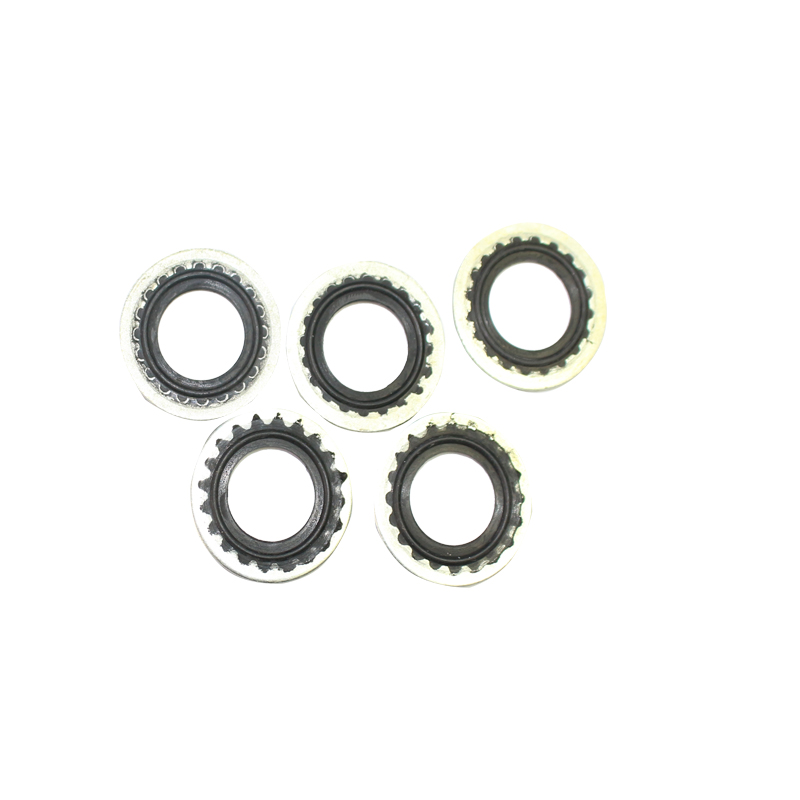Factors to Consider When Choosing Oil Seals for Optimal Performance and Longevity
Oil Seal Selection A Comprehensive Guide
Oil seals, also known as lip seals or rotary shaft seals, are crucial components in various mechanical systems. They are designed to prevent the leakage of lubricants while protecting internal components from contaminants. Selecting the appropriate oil seal is essential for ensuring the longevity and efficiency of machinery. In this article, we will explore the key factors involved in oil seal selection.
1. Understanding the Application
The first step in selecting an oil seal is to clearly understand the application's requirements. Consider the operating environment, including temperature ranges, pressure levels, and exposure to chemicals or other contaminants. For instance, oil seals used in automotive engines must withstand high temperatures and various motor oils, while those in hydraulic systems may need to handle high pressures.
2. Material Considerations
The material of the oil seal plays a significant role in its performance. Common materials include
- Nitrile Rubber (NBR) Known for its excellent resistance to petroleum-based oils and a wide temperature range. It is a popular choice for general applications.
- Fluoroelastomer (FKM) Offers superior chemical resistance and is ideal for hostile environments. It can withstand higher temperatures and is often used in aerospace and fuel applications.
- Polyurethane (PU) Known for its high wear resistance, PU seals are effective in applications involving high loads and speeds
.The choice of material depends on the specifics of the application, including operating temperature, speed, and the type of lubricant used.
oil seal selection

3. Size and Design Specifications
Oil seals come in various sizes and designs. It is critical to measure the shaft diameter, housing bore, and width accurately to ensure a proper fit. The seal's design can also affect its performance; for example, single-lip seals are commonly used for light applications, while double-lip seals provide better protection against contaminants.
4. Operating Conditions
Evaluate the dynamic conditions the seal will face during operation. Parameters such as shaft speed, vibration, and misalignment can significantly impact seal performance. For high-speed applications, it is often necessary to choose seals with specific design features, such as a hydrodynamic lip or incorporated springs, to ensure effective sealing and longevity.
5. Environmental Factors
Consideration of environmental factors is crucial in oil seal selection. Exposure to extreme temperatures, humidity, or other environmental stressors can degrade seal materials over time. Selecting seals that can withstand the specific conditions of the application is essential for maintaining operational effectiveness.
6. Manufacturer Specifications
Always refer to the manufacturer’s specifications for oil seals. Reputable producers provide detailed data on the performance characteristics of their products, which can assist in making informed decisions. Additionally, manufacturers may offer custom solutions for non-standard applications, ensuring compatibility and performance.
Conclusion
The selection of the right oil seal is vital for the efficient functioning of machinery and equipment. By considering key factors such as application requirements, material properties, size and design specifications, operating conditions, environmental factors, and manufacturer guidelines, one can make an informed choice. A well-chosen oil seal not only prevents leaks but also enhances the overall performance and reliability of mechanical systems, ultimately leading to reduced maintenance costs and increased equipment lifespan.
-
The Ultimate Guide to Car Repair Kits: Tools and Essentials Every Driver Should Own
News Aug.01,2025
-
The Complete Guide to Oil Pan Gaskets: Sealing Engine Leaks the Right Way
News Aug.01,2025
-
Preventing Oil Leaks: A Complete Guide to Oil Pan Gaskets and Drain Seals
News Aug.01,2025
-
Everything You Need to Know About Oil Pan Gaskets and Drain Plug Seals
News Aug.01,2025
-
Essential for Car Owners: How to Use a Car Repair Kit to Deal with Minor Breakdown
News Aug.01,2025
-
Comprehensive Guide to Engine Oil Sump Gaskets and Related Seals
News Aug.01,2025
-
The Ultimate Guide to Boat Propeller Bearings and Trailer Wheel Bearings
News Jul.31,2025
Products categories















